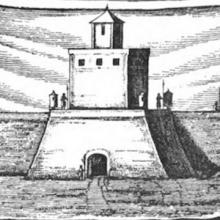Religion

Urban Dharma, Buddhism in America
Although many of the essays are intended to promote Buddhism and a Buddhist religious perspective, the site also includes English translations of important early South Asian documents.
Statistics on Catholicism in Poland after the fall of Communism
These figures show the fragility of Catholicism in Poland after the communist era. Whether questioned about matters of doctrine or lifestyle, large numbers of Poles agreed with the stated positions of the Roman Catholic Church.

Christian Classics Ethereal Library
This is still quite easily the best single location of source materials in English for the Reformation period online.
Long Teaching Module: The Catholic Church in Poland, 1950-2000
Poland is, at first glance, one of the most religiously homogeneous countries on earth.

Long Teaching Module: Sati
The status of widows in many societies has been precarious, because the deaths of husbands removed the primary source of their economic well-being as well as control over their sexuality.
Long Teaching Module: Women and Politics in Southeast Asia, 1900-2000
This module examines women’s attempts to negotiate political spaces in the realms of official and unofficial power in Southeast Asia in the 20th century.
The Catholic Church's role in the Roundtable Talks
In following letter, a Solidarity activist writes to Józef Cardinal Glemp, the head of the Roman Catholic church in Poland, to inform him of difficulties in setting up much-anticipated Round Table talks with the Communist regime.
Long Teaching Module: North African Women and the French Empire, 1850-2000
From the 18th century on, expanding European imperialism across the globe began to pose acute challenges to states and societies throughout Asia and Africa. These challenges held enormous repercussions for indigenous women of all social classes, religions, and ethno-racial backgrounds.

Long Teaching Module: Women in the British Empire, 1800-2000
This module will help students explore the importance of women—both British women and women from British colonies—to the British Empire, as well as their importance in developing an understanding of Britain as an imperial power to a domestic audience at home.

Long Teaching Module: Cultural Contact in Southern Africa
The Portuguese explorer Bartholomew Diaz first saw the Cape of Good Hope—the southernmost point in Africa—in 1488. No attempt was made by a European nation to establish a permanent settlement there, however, until 1652, when the Dutch East India Company (VOC) set up a refreshment station.